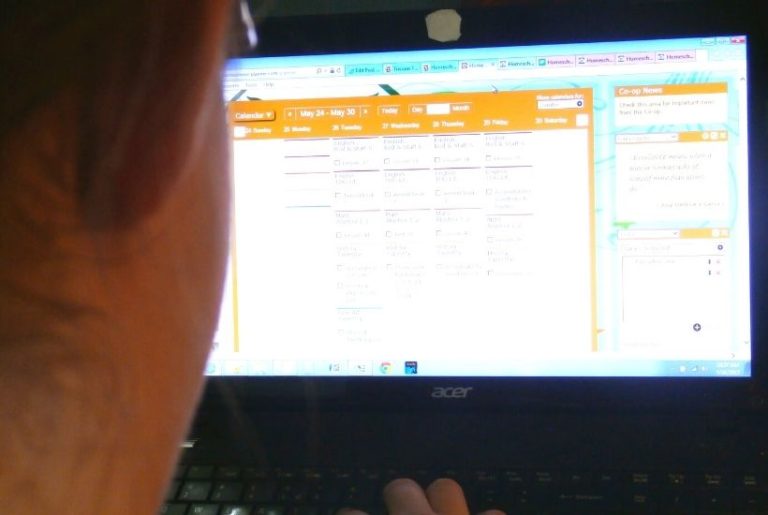Teaching Children and the Well-Run Homeschool
This post may contain affiliate links. For more information, please read my disclosure policy.
Books are neatly on the shelf and science supplies are tucked away in a box waiting to be used. You even have a schedule set for the homeschool! It’s time to sit down and teach.
Teaching children and the well-run homeschool.
This week I’m shifting focus from scheduling and organizing the homeschool to teaching the homeschool. After all, there’s no point in having a super organized homeschool with the perfect schedule if you never sit down and teach the children.
Isn’t that the entire point of homeschooling?
In general, I’ve found there are three general methods for teaching children in the homeschool. Teaching the kids as a group, combining studies, and teaching each child independently.
I’m going to introduce these three methods today, and cover them in greater detail later this week.
Teaching Children as a Group
Teaching children as a group is just what it sounds like. You gather all the children together to teach one or more subjects. This may mean read-aloud, poetry recitation, and art projects. You might also wind up teaching history, science, music appreciation, and fine art.
Often group time happens in the morning, so it’s often referred to as morning time rather than group time or circle time. I’ve never enjoyed the term circle time because it implies a preschool-oriented time of clocks, weather, and counting.
Morning time on the other hand refers to a beautiful start to the day of poetry memorization, great literature, nature study, and art.
Combining Children
Combining children is different than morning time. Morning time is a time when you sit down with your children to discuss and cover subjects as a family. Combining children merely means the kids are studying the same topics.
For instance, my children have been studying South America and its fight for independence in the early 1800s. Simon Bolivar was studied by all children.
My youngest children had a picture book about Simon Bolivar read to them over the course of a couple of weeks. My 8th-grade son read about Simon Bolivar as he read his assigned readings on South America, while my 11th-grade daughter researched a list of questions about Simon Bolivar.
We did not sit down to discuss Simon Bolivar as a family, but everyone was studying the same topic at various levels.
Independent
Independent work is when each child is working independently of all the other children. Math works this way for most families. There’s no attempt to combine two children in the same math program unless they’re both at the same level.
Instead, each child is taught math separately and given their own assignments. Over a day you may find yourself introducing functions or proofs to a high school teenager, discussing surface area with a middle school student, and teaching an elementary child how to carry in addition.
Some families, even large families, choose to keep all their children’s studies independent of each other. Other times a mother may choose to keep all the family’s studies combined. It’s possible, even for math, but difficult.
Most of the time, homeschoolers choose to vary between group subjects, combined subjects, and independent subjects. It depends upon what’s easiest for you.
This post is part of my 31 Days to a Well-Run Homeschool series. Don’t miss the other posts!









